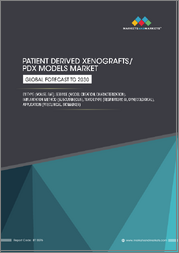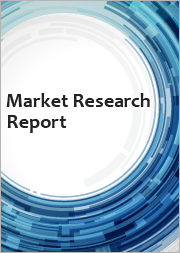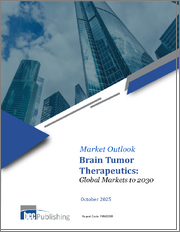
|
시장보고서
상품코드
1570943
종양괴사인자 저해제 시장 : 기회, 성장 촉진요인, 산업 동향 분석과 예측(2024-2032년)Tumor Necrosis Factor Inhibitor Drugs Market, Opportunity, Growth Drivers, Industry Trend Analysis and Forecast, 2024-2032 |
||||||
세계의 종양괴사인자(TNF) 저해제 시장은 2023년에 413억 달러로 평가되며, 2024-2032년 CAGR 2.2%로 성장할 것으로 예측됩니다. 이 시장의 성장은 건선, 류마티스 관절염, 염증성장질환과 같은 자가면역질환의 유병률 증가에 기인합니다. 이러한 질환에 대한 인식과 진단 능력이 향상됨에 따라 효과적인 치료 옵션에 대한 수요가 크게 증가하고 있으며, TNF 억제제는 만성 염증성 질환의 증상 조절에 효과적인 것으로 알려져 치료 프로토콜의 중요한 컴포넌트로 자리 잡고 있습니다.
종양괴사인자 억제제 시장은 약물 유형별로 셀트리주맙 페골, 아달리무맙, 인플릭시맙, 에타너셉트, 골리무맙으로 분류되며, 2023년에는 아달리무맙 부문이 시장을 주도하여 242억 달러 규모로 평가될 것으로 예상됩니다. 종양괴사인자(TNF)에 초점을 맞춘 단클론 항체인 아달리무맙은 광범위한 효능, 우수한 안전성 프로파일, 다양한 자가면역질환에 대한 사용으로 TNF 억제제 분야에서 큰 시장 점유율을 차지하고 있습니다. 새로운 제형과 전달 방법의 지속적인 개발로 시장에서의 입지를 강화하고 있습니다.
적응증별로 종양괴사인자 억제제 시장은 화농성 땀샘염, 류마티스 관절염, 류마티스 관절염, 건선, 건선, 크론병, 강직성 척추염, 궤양성 대장염, 청소년 특발성 관절염 및 기타 질환을 포함하며, 2023년 류마티스 관절염 분야가 42.0%의 점유율로 시장을 주도할 것으로 예상됩니다. 류마티스 관절염(RA)은 주로 관절에 영향을 미치는 만성 염증성 질환으로 통증, 부종, 관절 손상을 유발할 수 있으며, 효과적인 치료를 원하는 환자가 많으며, RA의 유병률 증가와 더불어 RA에 대한 인식과 진단율이 높아지면서 RA 치료에서 TNF 억제제에 대한 수요가 증가하고 있습니다.
2023년 북미의 매출은 170억 달러에 달하고, 세계 종양괴사인자 억제제 시장을 주도했습니다. 이 지역의 리더십은 혁신적인 TNF 억제제 개발을 선도하는 선도적인 제약사와 바이오 제약사가 존재하므로 가능했습니다. 북미의 강력한 의료 시스템과 잘 확립된 규제 경로가 결합되어 새로운 치료법의 빠른 시장 진입과 수용을 가능하게 합니다. 환자들의 높은 인식과 최첨단 치료 옵션에 대한 접근성은 세계 TNF 억제제 시장에서 북미의 우위를 확고히 하고 있습니다.
목차
제1장 조사 방법과 조사 범위
제2장 개요
제3장 업계 인사이트
- 에코시스템 분석
- 업계에 대한 영향요인
- 촉진요인
- 자가면역질환의 증가
- 치료 적응의 확대
- 바이오테크놀러지와 의약품 개발의 진보
- 업계의 잠재적 리스크 & 과제
- 치료비의 상승
- 부작용과 안전성에 대한 우려
- 촉진요인
- 성장 가능성 분석
- 규제 상황
- 파이프라인 분석
- 특허 분석
- Porter의 산업 분석
- PESTEL 분석
제4장 경쟁 구도
- 서론
- 기업 점유율 분석
- 기업 매트릭스 분석
- 주요 시장 기업의 경쟁 분석
- 경쟁 포지셔닝 매트릭스
- 전략 대시보드
제5장 시장 추산·예측 : 약제 클래스별, 2021-2032년
- 주요 동향
- Adalimumab
- 브랜드
- 바이오시밀러
- Etanercept
- 브랜드
- 바이오시밀러
- Infliximab
- 브랜드
- 바이오시밀러
- Golimumab
- Certolizumab pegol
제6장 시장 추산·예측 : 적응증별, 2021-2032년
- 주요 동향
- 류마티스 관절염
- 건선
- 건선성 관절염
- 크론병
- 궤양성 대장염
- 강직성 척추염
- 소아특발성관절염
- 화농성한선염
- 기타 적응증
제7장 시장 추산·예측 : 투여 경로별, 2021-2032년
- 주요 동향
- 피하 주사
- 정맥주사
제8장 시장 추산·예측 : 유통 채널별, 2021-2032년
- 주요 동향
- 병원 약국
- 소매 약국
- 온라인 약국
제9장 시장 추산·예측 : 지역별, 2021-2032년
- 주요 동향
- 북미
- 미국
- 캐나다
- 유럽
- 독일
- 영국
- 프랑스
- 스페인
- 이탈리아
- 네덜란드
- 기타 유럽
- 아시아태평양
- 중국
- 일본
- 인도
- 호주
- 한국
- 기타 아시아태평양
- 라틴아메리카
- 브라질
- 멕시코
- 기타 라틴아메리카
- 중동 및 아프리카
- 남아프리카공화국
- 사우디아라비아
- 아랍에미리트
- 기타 중동 및 아프리카
제10장 기업 개요
- AbbVie Inc.
- Amgen Inc.
- Boehringer Ingelheim Pharmaceuticals, Inc.
- Bio-Thera Solutions, Ltd.
- Janssen Biotech, Inc.
- Merck and Co., Inc.
- Pfizer Inc.
- Samsung Bioepis Co., Ltd.
- Sandoz Group AG
- UCB, Inc.
The Global Tumor Necrosis Factor (TNF) Inhibitor Drugs Market was valued at USD 41.3 billion in 2023 and is projected to grow at a CAGR of 2.2% from 2024-2032. The market's growth is largely attributed to the increasing incidence of autoimmune diseases such as psoriasis, rheumatoid arthritis, and inflammatory bowel disease. As awareness and diagnostic capabilities for these conditions improve, the demand for effective treatment options has risen significantly. TNF inhibitors, known for their efficacy in controlling symptoms of chronic inflammatory diseases, have become a key component in treatment protocols.
The overall tumor necrosis factor inhibitor drugs industry is classified based on the drug class, indication, route of administration, distribution channel, and region.
The tumor necrosis factor inhibitor drugs market is categorized by drug class into certolizumab pegol, adalimumab, infliximab, etanercept, and golimumab. In 2023, the adalimumab segment led the market, commanding a valuation of USD 24.2 billion. Adalimumab, a monoclonal antibody with a focus on tumor necrosis factor (TNF), boasts a significant market share in the TNF inhibitor drugs arena, thanks to its broad efficacy, commendable safety profile, and prevalent use across various autoimmune diseases. The continuous development of novel formulations and delivery methods bolsters its market presence.
Segmented by indication, the tumor necrosis factor inhibitor drugs market includes hidradenitis suppurativa, rheumatoid arthritis, psoriatic arthritis, psoriasis, Crohn's disease, ankylosing spondylitis, ulcerative colitis, juvenile idiopathic arthritis, and other conditions. In 2023, the rheumatoid arthritis segment led the market with a 42.0% share. Rheumatoid arthritis (RA) is a chronic inflammatory disorder primarily impacting joints, leading to pain, swelling, and potential joint damage, resulting in a significant patient population seeking effective treatment. The rising prevalence of RA, combined with heightened awareness and diagnostic rates, has spurred the demand for TNF inhibitors in RA treatment.
In 2023, North America led the global tumor necrosis factor inhibitor drugs market with revenues reaching USD 17 billion, and projections suggest it could hit USD 20 billion by 2032. The region's leadership is largely due to the presence of top-tier pharmaceutical and biopharmaceutical companies, which are at the forefront of developing innovative TNF inhibitors. North America's strong healthcare system, paired with established regulatory pathways, ensures swift market entry and acceptance of new therapies. Heightened patient awareness and access to cutting-edge treatment options solidify North America's dominant stance in the global TNF inhibitor drugs market.
Table of Contents
Chapter 1 Methodology and Scope
- 1.1 Market scope and definitions
- 1.2 Research design
- 1.2.1 Research approach
- 1.2.2 Data collection methods
- 1.3 Base estimates and calculations
- 1.3.1 Base year calculation
- 1.3.2 Key trends for market estimation
- 1.4 Forecast model
- 1.5 Primary research and validation
- 1.5.1 Primary sources
- 1.5.2 Data mining sources
Chapter 2 Executive Summary
- 2.1 Industry 360° synopsis
Chapter 3 Industry Insights
- 3.1 Industry ecosystem analysis
- 3.2 Industry impact forces
- 3.2.1 Growth drivers
- 3.2.1.1 Increasing prevalence of autoimmune diseases
- 3.2.1.2 Expansion of therapeutic indications
- 3.2.1.3 Advancements in biotechnology and drug development
- 3.2.2 Industry pitfalls and challenges
- 3.2.2.1 High cost of treatment
- 3.2.2.2 Side effects and safety concerns
- 3.2.1 Growth drivers
- 3.3 Growth potential analysis
- 3.4 Regulatory landscape
- 3.5 Pipeline analysis
- 3.6 Patent analysis
- 3.7 Porter's analysis
- 3.8 PESTEL analysis
Chapter 4 Competitive Landscape, 2023
- 4.1 Introduction
- 4.2 Company market share analysis
- 4.3 Company matrix analysis
- 4.4 Competitive analysis of major market players
- 4.5 Competitive positioning matrix
- 4.6 Strategy dashboard
Chapter 5 Market Estimates and Forecast, By Drug Class, 2021 - 2032 ($ Mn)
- 5.1 Key trends
- 5.2 Adalimumab
- 5.2.1 Branded
- 5.2.2 Biosimilar
- 5.3 Etanercept
- 5.3.1 Branded
- 5.3.2 Biosimilar
- 5.4 Infliximab
- 5.4.1 Branded
- 5.4.2 Biosimilar
- 5.5 Golimumab
- 5.6 Certolizumab pegol
Chapter 6 Market Estimates and Forecast, By Indication, 2021 - 2032 ($ Mn)
- 6.1 Key trends
- 6.2 Rheumatoid arthritis
- 6.3 Psoriasis
- 6.4 Psoriatic arthritis
- 6.5 Crohn's disease
- 6.6 Ulcerative colitis
- 6.7 Ankylosing spondylitis
- 6.8 Juvenile idiopathic arthritis
- 6.9 Hidradenitis suppurativa
- 6.10 Other indications
Chapter 7 Market Estimates and Forecast, By Route of Administration, 2021 - 2032 ($ Mn)
- 7.1 Key trends
- 7.2 Subcutaneous injection
- 7.3 Intravenous injection
Chapter 8 Market Estimates and Forecast, By Distribution Channel, 2021 - 2032 ($ Mn)
- 8.1 Key trends
- 8.2 Hospital pharmacies
- 8.3 Retail pharmacies
- 8.4 Online pharmacies
Chapter 9 Market Estimates and Forecast, By Region, 2021 - 2032 ($ Mn)
- 9.1 Key trends
- 9.2 North America
- 9.2.1 U.S.
- 9.2.2 Canada
- 9.3 Europe
- 9.3.1 Germany
- 9.3.2 UK
- 9.3.3 France
- 9.3.4 Spain
- 9.3.5 Italy
- 9.3.6 Netherlands
- 9.3.7 Rest of Europe
- 9.4 Asia Pacific
- 9.4.1 China
- 9.4.2 Japan
- 9.4.3 India
- 9.4.4 Australia
- 9.4.5 South Korea
- 9.4.6 Rest of Asia Pacific
- 9.5 Latin America
- 9.5.1 Brazil
- 9.5.2 Mexico
- 9.5.3 Rest of Latin America
- 9.6 Middle East and Africa
- 9.6.1 South Africa
- 9.6.2 Saudi Arabia
- 9.6.3 UAE
- 9.6.4 Rest of Middle East and Africa
Chapter 10 Company Profiles
- 10.1 AbbVie Inc.
- 10.2 Amgen Inc.
- 10.3 Boehringer Ingelheim Pharmaceuticals, Inc.
- 10.4 Bio-Thera Solutions, Ltd.
- 10.5 Janssen Biotech, Inc.
- 10.6 Merck and Co., Inc.
- 10.7 Pfizer Inc.
- 10.8 Samsung Bioepis Co., Ltd.
- 10.9 Sandoz Group AG
- 10.10 UCB, Inc.



















